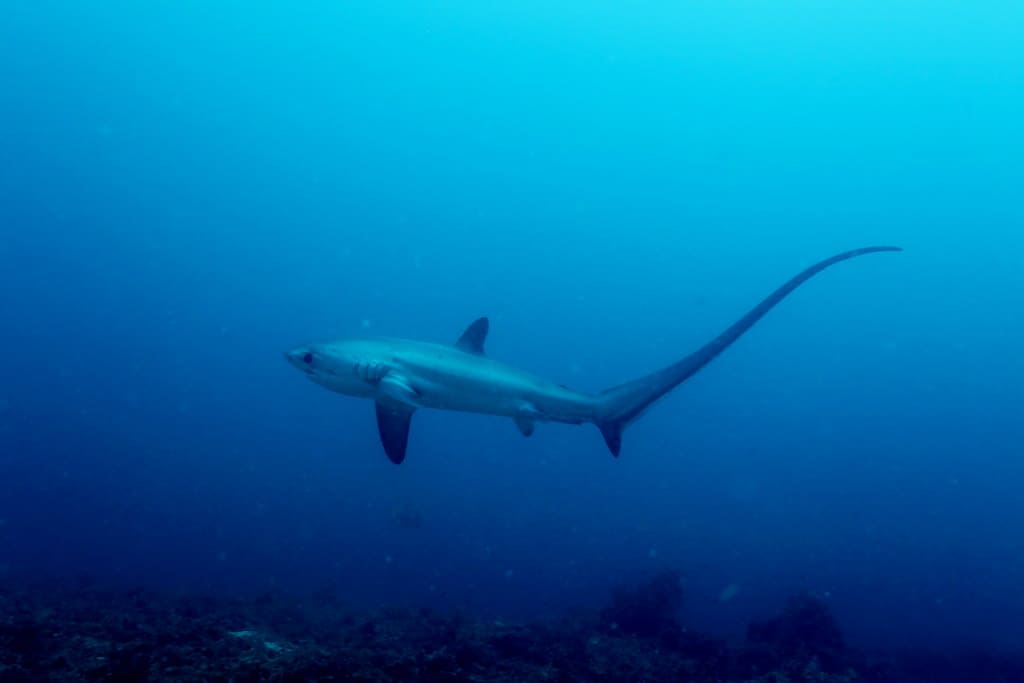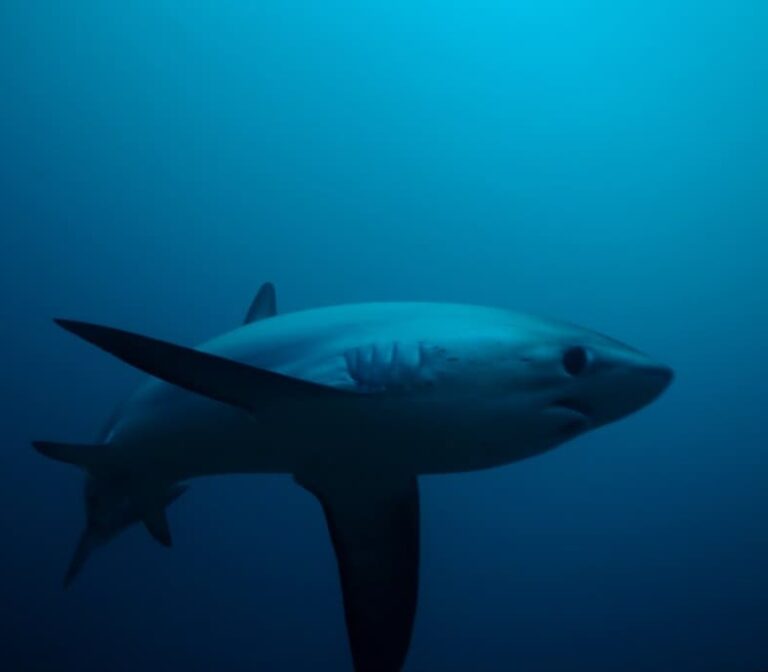Thresher Sharks are found more in the open sea as they prefer deeper waters for better hunting opportunities and tend to stray away from the coastal waters close to Cornwall. In deeper waters they herd smaller shoaling fish into a tight circle, then swim at high speeds and thrash their tail like a whip, stunning the fish and making them easy targets. Thresher Sharks have evolved to survive in colder waters, using endothermy – generating their own body heat with a specialised system of heat exchange. For more fun Thresher shark facts, read on…
Share with a friend:

Thresher Sharks’ tails makeup around half the length of their entire body, and can reach up to 3 metres long!

Book a boat trip and you might get lucky to see one of these fantastic creatures in our Cornish waters. Sharks are not a common sighting on our trips as they do not need to surface to breathe like whales and dolphins do, and tend to stick to deeper waters, but every trip is different and you never know what you might see. Experience our boat trips and keep your eyes open and you might just get lucky.
Thresher shark is a species of shark that is known for its long, scythe-like tail fin which it uses to herd and stun schools of small fish. They belong to the shark family Alopiidae.
Thresher sharks are found in temperate and tropical waters worldwide. They are generally found in open ocean areas near continental shelves, islands, and seamounts, but can also be seen close to shore in some regions. Some of the places where thresher sharks are commonly found include the Atlantic Ocean, the Indian Ocean, the Pacific Ocean, and the Mediterranean Sea.
Thresher sharks primarily feed on small pelagic fish. They have also been known to feed on squid and crustaceans.
The lifespan of thresher sharks is not well understood, but it is estimated to be between 20 and 50 years.
Thresher sharks are ovoviviparous, meaning the pups grow within eggs inside the body and then the female will give birth to them once they hatch out. Female thresher sharks can produce several litters over the course of their lifetime.
Thresher sharks are considered to be vulnerable by the International Union for Conservation of Nature (IUCN) due to overfishing and bycatch in commercial fishing operations. The species is also vulnerable to habitat degradation and destruction, as well as climate change and ocean acidification.
Thresher sharks are relatively fast swimmers and are capable of reaching speeds of up to 37 mph, however, they cannot sustain speed while swimming and generally swim at a more leisurely pace.
Thresher sharks are not considered dangerous, generally speaking, and often avoid humans. Divers have considered thresher sharks to be timid. However, they are very powerful and quick when catching prey.
Padstow Sealife Safaris give you the chance to get up close and personal with these fascinating creatures. Depending on the time of year that you choose to visit, you’ll have the chance to see a number of different species.